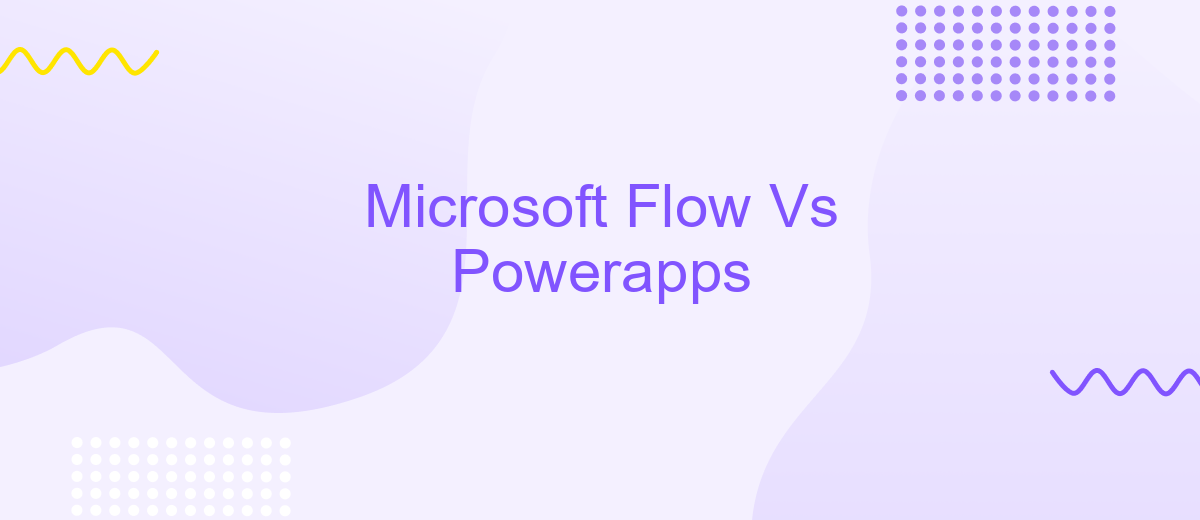Microsoft Flow Vs Powerapps
In today's rapidly evolving digital landscape, businesses are constantly seeking tools to streamline processes and enhance productivity. Microsoft Flow and PowerApps are two powerful solutions that cater to these needs, offering automation and custom app development respectively. This article delves into a comparative analysis of Microsoft Flow and PowerApps, highlighting their features, benefits, and ideal use cases for businesses.
Introduction
In today's fast-paced digital landscape, businesses are constantly seeking ways to streamline processes and enhance productivity. Microsoft Flow and PowerApps are two powerful tools that cater to these needs by enabling automation and custom app development. Understanding the differences and unique features of each can help organizations make informed decisions about which tool to use for specific tasks.
- Microsoft Flow: A cloud-based service that automates workflows between apps and services.
- PowerApps: A suite of apps, services, and connectors that provides a rapid application development environment to build custom apps.
- ApiX-Drive: A service that facilitates integration between different applications, enhancing the capabilities of both Microsoft Flow and PowerApps.
Both Microsoft Flow and PowerApps offer unique advantages, with Flow focusing on automation and PowerApps on custom app development. By integrating these tools with services like ApiX-Drive, businesses can achieve even greater efficiency and flexibility in their operations. Understanding how to leverage these tools effectively can lead to significant improvements in workflow management and overall productivity.
Key Differences

Microsoft Flow, now known as Power Automate, is designed primarily for automating workflows between various applications and services. It focuses on enhancing productivity by automating repetitive tasks and integrating different systems seamlessly. Power Automate is particularly useful for creating automated workflows that can trigger actions, send notifications, and synchronize data across different platforms without the need for extensive coding knowledge.
On the other hand, PowerApps is a platform for building custom business applications with minimal coding. It allows users to create tailored applications that can run on various devices, including mobile phones and tablets. PowerApps is more focused on app development and providing a user-friendly interface for creating forms, dashboards, and other interactive elements. When it comes to setting up integrations, services like ApiX-Drive can be extremely helpful, enabling seamless data flow between PowerApps and other third-party applications, thus enhancing the overall functionality and efficiency of the apps created.
Use Cases

Microsoft Flow and PowerApps serve distinct purposes but can be incredibly powerful when used together. Microsoft Flow is designed to automate workflows and integrate various services, while PowerApps focuses on building custom applications with minimal coding. Here are some use cases to illustrate their unique strengths:
- Automated Notifications: Use Microsoft Flow to send automated notifications via email or SMS when specific events occur, such as new entries in a SharePoint list.
- Data Collection Apps: Create custom forms and applications with PowerApps to collect data from users, which can then be automatically processed and stored using Microsoft Flow.
- Integration with Third-party Services: Leverage services like ApiX-Drive to connect PowerApps and Microsoft Flow with external applications, enabling seamless data transfer and workflow automation.
- Approval Workflows: Implement approval workflows where PowerApps is used to submit requests, and Microsoft Flow manages the approval process, ensuring timely and efficient decision-making.
By combining the capabilities of Microsoft Flow and PowerApps, organizations can streamline operations, enhance productivity, and create robust solutions tailored to their specific needs. Whether it's automating routine tasks or building complex applications, these tools offer versatile options for various business scenarios.
Pricing and Licensing

When comparing Microsoft Flow and PowerApps, it's essential to consider their pricing and licensing structures. Both tools are part of the Microsoft Power Platform, but they have different pricing models tailored to their specific functionalities.
Microsoft Flow, now known as Power Automate, offers a range of pricing options, including a free tier for basic automation needs. Paid plans start from per user per month, offering more advanced features and higher usage limits. PowerApps, on the other hand, has a per-app plan starting at per user per app per month, and a per-user plan at per user per month for unlimited apps.
- Power Automate Free: Basic automation features
- Power Automate Paid Plans: Starting at /user/month
- PowerApps Per App Plan: /user/app/month
- PowerApps Per User Plan: /user/month
Additionally, integrating these tools with other services can enhance their capabilities. For instance, using ApiX-Drive can simplify the process of setting up integrations between Power Automate, PowerApps, and other third-party applications, ensuring seamless data flow and automation across platforms.
Conclusion
In conclusion, both Microsoft Flow and PowerApps offer robust solutions for automating workflows and building custom applications. Microsoft Flow excels in its ability to streamline processes and integrate various services, making it an excellent choice for businesses looking to enhance productivity through automation. On the other hand, PowerApps shines in its flexibility to create tailored applications that meet specific business needs, providing a user-friendly platform for both developers and non-developers alike.
Choosing between the two depends largely on your organization's requirements. If your primary focus is on automating and integrating different services, Microsoft Flow is the way to go. However, if you need to build custom applications with ease, PowerApps is more suitable. For those looking to enhance their integration capabilities even further, services like ApiX-Drive can be invaluable, offering seamless connectivity between various applications and systems. Ultimately, leveraging the strengths of both platforms can lead to a more efficient and innovative business environment.
- Automate the work of an online store or landing
- Empower through integration
- Don't spend money on programmers and integrators
- Save time by automating routine tasks
FAQ
What is the primary difference between Microsoft Flow and PowerApps?
Can Microsoft Flow and PowerApps be used together?
Do I need coding skills to use Microsoft Flow and PowerApps?
Can I integrate Microsoft Flow and PowerApps with third-party applications?
Are there any limitations to using Microsoft Flow and PowerApps?
Apix-Drive is a simple and efficient system connector that will help you automate routine tasks and optimize business processes. You can save time and money, direct these resources to more important purposes. Test ApiX-Drive and make sure that this tool will relieve your employees and after 5 minutes of settings your business will start working faster.


